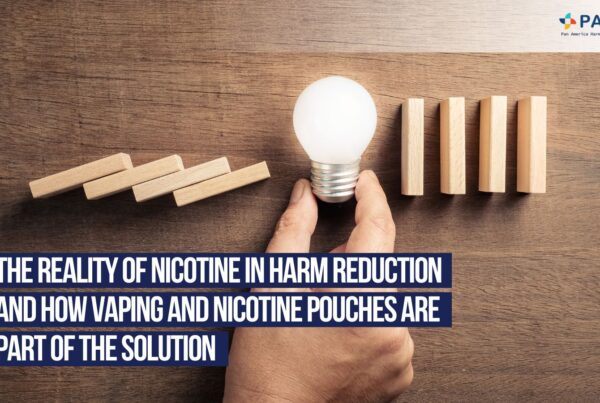
Resources to help create a foundational understanding of tobacco harm reduction
The purpose of tobacco harm reduction (THR) and everything within it can sometimes be challenging to map out and understand. This leads to incorrect categorisations, false information, and negative preconceptions that interfere with THR’s actual goal and work.
To help make this harm reduction world easier to navigate, we have compiled five key articles addressing a few of THR’s facets. Together, these articles provide a foundation of what THR is, some of its key products, and the policy direction it supports.
1. Understanding Tobacco Harm Reduction: A Comprehensive Guide
This comprehensive guide to tobacco harm reduction defines the approach as a “major strategic effort with many core strategic goals; it seeks to reduce health risks from continued tobacco use to those who are unwilling or unable to quit.” It also summarises the spectrum of THR strategies and their benefits.
2. Vaping Less Risky for Smokers, Largest Study Review of its Kind Finds
For those who believe or argue that vaping is just as harmful as combustible cigarettes, this article shares one of many studies that scientifically falsify such claims. The study finds vaping to be “significantly less harmful” than smoking while acknowledging its increased risks for someone who does not smoke at all. This fits directly into THR’s understanding of a risk continuum, which allows for the recognition of vaping’s disadvantageous while still placing it as a better option for smokers.
3. Is There A Link Between E-Cigarette Use and ‘Popcorn Lung’?
Another debunked yet common myth associated with vaping is the claim that it can cause bronchiolitis, also known as ‘popcorn lung.’ However, there have been no cases linking vaping to popcorn lung. The substances contained within legal vapes are also monitored to prevent just this kind of exposure,
4. Are Nicotine Pouches FDA Approved?
When it comes to monitoring and approval, it is not only vapes but also nicotine pouches that are regulated. Since 2022, the U.S. Food and Drug Administration (FDA) has been authorised to regulate non-tobacco nicotine products. This allows consumers to access safer products and more accurate information about harm-reduced alternatives.
5. Regulation, Not Prohibition – A Smarter Approach to Tobacco Control
A paradigm shift is needed to successfully address tobacco policies and harm reduction strategies across the Americas and the rest of the world. While THR aims to ease the burden of tobacco consumption and the combustion process on public health, it is often mistakenly placed in the same category as tobacco policies. As governments seem most comfortable banning particular harm-reduced products or the category as a whole, this article argues that risk-proportionate regulation, not prohibition, will help.
As more evidence and science emerge, the public health benefits of THR become apparent, with even more significant potential when regulations involve a proper understanding. Understanding how harm reduction displaces tobacco becomes vital to minimising the harm of combustion and the displacement of new tobacco consumers.
Tags
Popular Posts
Quick Links
Related Posts
 Paradigm Shift Needed In Pan America’s Approach to End Smoking
Paradigm Shift Needed In Pan America’s Approach to End Smoking
Paradigm Shift Needed In Pan America’s Approach to End Smoking
 Tobacco Harm Reduction Seminar in Brazil
Tobacco Harm Reduction Seminar in Brazil
Tobacco Harm Reduction Seminar in Brazil
 Systematic Review of Vaping Flavours | Dr. Konstantinos Farsalinos
Systematic Review of Vaping Flavours | Dr. Konstantinos Farsalinos





